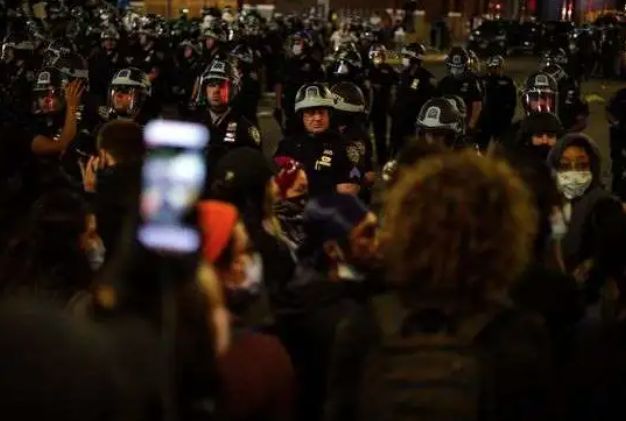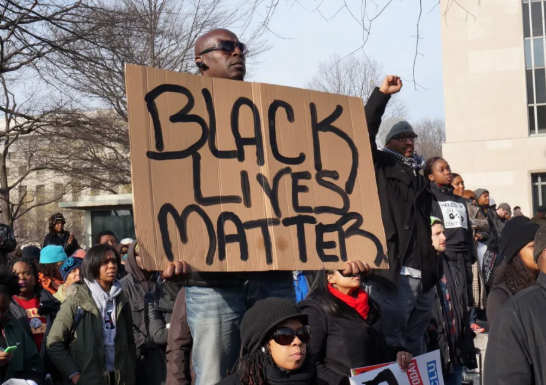Source: iFeng Technology
Editor's note: with the ferment of Freud's death, the history of racial discrimination in the United States has become more and more prominent. The indifference of the government and police to the incident led to widespread protests across the United States. However, social media seems to play an important role in the protest, not only as a tool for spreading anger, but also as another "main battlefield" for the protest.
In recent days, social media seems to have become the main battleground of protests across the United States, where these technology platforms have attracted wide attention while promoting tensions while recording protests and police responses in real time.
Social media that has become the main battleground of the protests
Last Monday, an eyewitness named Danera Fraser posted a violent law enforcement video on Facebook Inc that led to the death of George Freud. The video was shared not only by more than 52000 people on Facebook Inc, but also on Twitter, Instagram and other social platforms, drawing intense attention to the incident.

Social media has become the main battlefield of protests in the United States.
Since then, these social media have become tools to spread people's opinions and anger. People who are uneasy about Freud's death and those affected by violence by protesters and police in American cities pay close attention to social media information.
Alex Stamos, director of Stanford University's Internet Observatory Center, said: "Social media's quick sharing of videos before and after Freud's arrest played a key role in stimulating protests. It spreads the problems that occur in such places to the whole country, which 20 years ago might only have appeared in local media reports. "
Nathaniel Peselli, a law professor at Stanford University and director of the Center for Cyber Policy at the University of California, said the protests sparked an online war about how people perceive their identity and turned into an online war of views. "on social media, people also disagree about the description of what happened at the scene," he said. "
Misinformation can mislead people.
In some cases, wrong or distorted information can incite people's anger. A photo was widely circulated on social media last week that Derek Shauwan, a policeman kneeling on Freud's neck, had worn a red hat similar to the one worn at President Trump's rally with the slogan "make White people Great again." Twitter tagged posts containing the photos as "manipulating the media" because some of the photos were not Xiao Wan.
Gideon Bullock, chief executive of VineSight, which tracks social media actions and misinformation, said there was a continuing debate on social media about who was behind the robberies and protests in several cities.
U.S. president Donald Trump said on Sunday that the protests involved radical left-wing anarchists and anti-fascists, and he said he would characterize these groups as terrorist organizations. Minnesota officials said Saturday that white supremacists and organized drug cartels could infiltrate the protests.
Over the weekend, Twitter closed an account called "ANTIFA America", saying it violated the company's rules, and posts from the account appeared to call for racial violence. Some users thought it was actually a warning of violence, while others thought the tweet was designed to incite anger against the protests. Twitter did not explain which of the company's rules were violated by the closed account.
Social media has become a tool for spying on each other
These platforms can not only ignite the mood of the protesters, but also influence the action strategies of both sides. Lauren Zoboyd, vice president of diversity and inclusion at the University of New Haven and director of the Senior Police Center, said some protesters and their supporters appeared to be using social media to avoid conflict with law enforcement. Protesters tell each other which areas to avoid and which areas are safe, and in many cases they react faster than the police.
Twitter users said they could monitor official communications through scanners and alert protesters about police action. A user who retweeted the LAPD event warned that the police were trying to lure protesters to an area to make an arrest and urged fans to share the tweet. The tweet was eventually forwarded more than 120000 times and liked more than 240000 times.
"in the age of social media, protests have become an instant act," Dr. Boyd said. People don't even need leaders to do it anymore. This strategy has also been adopted by law enforcement agencies in the United States. The New York Police Department said on Sunday that it was tracking the movements of protesters by monitoring social media.
Social Media and Social unrest
Twitter, then only five years old, became a central tool for protesters during the Arab Spring riots in 2011. The hashtag "Black Life is equally important" came into being in 2012 when Trevor Martin, an unarmed teenager in Florida, was shot and went viral. Last year, a video of the attack on two mosques in New Zealand was broadcast live on Facebook Inc and uploaded to YouTube and Twitter. But social media platforms are scrambling to delete the content.
A Twitter spokesman said the company is using existing teams and tools to monitor violence-related content on the site and is taking action to prevent any discussion that tries to mislead the issue. Nathaniel Glasher, director of cyber security policy at Facebook Inc, said the company is using tools to crack down on misinformation related to the protests while trying to avoid hampering people's ability to share information.
The protest surpassed the epidemic and became a hot topic
The coronavirus epidemic has actually increased social media coverage. During the epidemic, the number of users of both Twitter and Facebook Inc increased sharply, as people were looking for information about the disease and trying to keep in touch.
Bullock from VineSight said the discussions related to the George Freud video and the subsequent protests had overtaken the coronavirus to become the hottest topic on the Internet. But he warned that people with bad intentions had infiltrated online discussions about Freud's death.

Racial discrimination in the United States has a long history.
The protest stems from "rising abruptly based on accumulated strength".
Joan Donovan, director of a Harvard University program on technology and social change, said one of the reasons for the anger over Freud's death was that there had been several race-related incidents before the release of a video of him being violently enforced.
A few days ago, for example, Americans were struggling with the shooting of Ahmed Abley. Video of the 25-year-old black man Abley being hunted by armed white residents in Georgia has gone viral on social media. Later, a white woman in New York's Central Park reported to the police that a black man had asked her to tie his dog on a leash. "there is always an incentive for things like this," Dr. Donovan said. "
With the growing influence of social media, they are under increasing pressure to constantly regulate some of their content. The debate about the content of the protest is also going on within these companies.
On Monday, Republican Congressman Matt Gates of Florida posted a tweet saying, "now that we clearly regard anti-fascism as terrorists, can we hunt them down like we did in the Middle East?" Twitter retained the tweet but tagged it, saying it violated rules to glorify violence.
Last week, a tweet by President Trump about the riots was also labeled as glorifying violence on Twitter. Although Twitter retained Trump's tweets, it prevented more than 80 million of his followers from commenting, retweeting or liking him through hiding.
The same posts are not restricted on Facebook Inc. Mark Zuckerberg said he had a heartfelt aversion to such divisive and inflammatory remarks, but he would not delete the post because Facebook Inc wanted to express his views as much as possible.
Trump was annoyed by the reaction of social media
Trump has said in two tweets that California's distribution of mailed ballots for this year's presidential election to residents could lead to fraud. Twitter believes that these tweets contain potentially misleading information and believes that these tweets are unfounded. Trump then threatened to take major action against social media.
Trump decided that Twitter checks the content of his tweets and becomes an "editor" with opinions, rather than a neutral content platform. "We will regulate them, and I will instruct the Attorney General to work with states to combat such deceptive business practices," he said. Trump ordered the Commerce Department to ask the Federal Communications Commission to evaluate the provisions of the Communications regulations Act on "protecting" social media and propose amendments.
Edit / Phoebe
